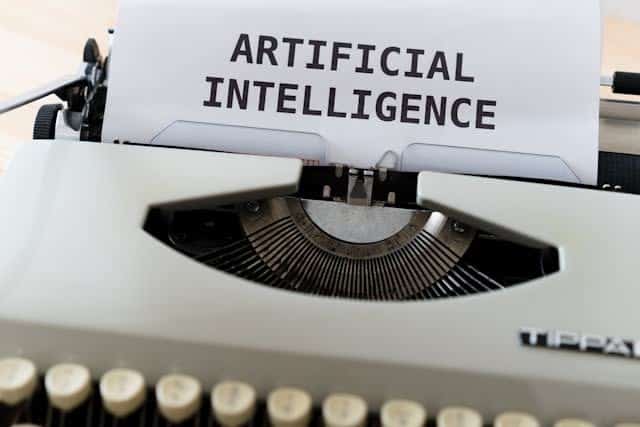Technology keeps evolving every day, and one of the most significant evolutions is the introduction of Artificial Intelligence.
AI is everywhere now, from your playlist recommendations to your phone’s voice assistant. It is like an invincible helper making your daily life better.
We all interact with AI on a daily basis, without knowing how it works or what makes it behave the way it does.
After getting to know the strength of AI systems, you will come to a realization that AI is not a mystical entity as people would like to put it.
Thus, consider this article a mini course on artificial intelligence.
Key Takeaways
- Artificial intelligence works by analyzing data and using algorithms
- It learns human patterns to make decisions
- It uses neural networks to mimic how our brains work
- Machine learning powers most AI applications
What Is Artificial Intelligence?
So what is artificial intelligence and how does it work? AI is a simulation of human intelligence using machines or computers.
AI is comparable to training a computer to think and learn as human beings do.
Now imagine you are trying to teach a friend how to recognize different breeds of dogs.


Never Worry About AI Detecting Your Texts Again. Undetectable AI Can Help You:
- Make your AI assisted writing appear human-like.
- Bypass all major AI detection tools with just one click.
- Use AI safely and confidently in school and work.
The most appropriate way would be to present them with different images of dogs, indicating the differences between these breeds.
Eventually, they would become good enough to spot the differences without your help.
That’s what experts do with AI, except instead of training a friend, they are doing it with machines and computer systems.
Artificial intelligence machines are taught to evaluate anything from a medical diagnosis to ordinary questions.
Artificial intelligence imitates and improves the human capacity to communicate, learn, and make decisions. It does work that would normally require human intelligence.
That is why you can say it thinks like a human being but faster. Instead of using pre-programmed instructions, AI looks at data, recognizes patterns, and gives results.
Intelligence Simulated by Machines
Artificial, as you are aware, means man-made, and intelligence by definition has to do with the capacity to learn, solve problems, and be adaptive.
Therefore, when you put the two terms together, you understand that AI is an artificial intelligence that is prompted by machines.
Artificial intelligence is man-made brain power. But they are not as emotional or irrational as we humans.
They are more efficient, though they do not think exactly as we do.
For instance, you may identify the voice of a beloved person you are emotionally attached to and have many memories with.
In the case of AI, it identifies the voice based on the pattern of sound waves, frequency, and matches it with millions of databases and voice samples.
Even though you achieve the same results, it is not the same process.
Although AI is amazing at doing some tasks, it can still be less intelligent and fail some emotional tasks, like interpreting an inside joke.
The Core Components of AI
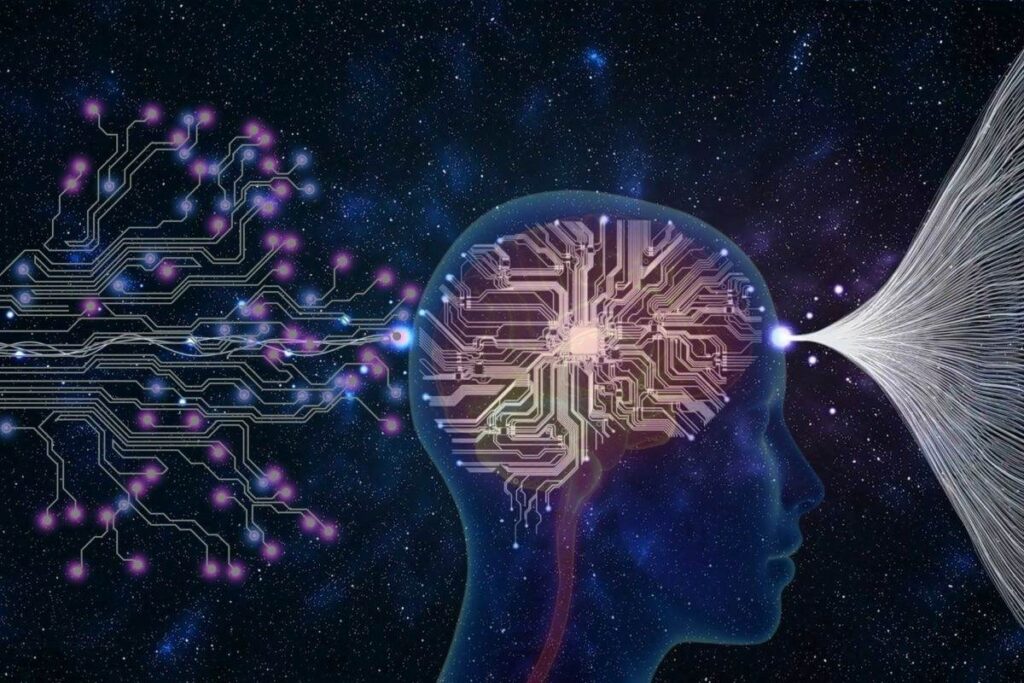
AI works because it has certain components. Think of it as a recipe that requires key ingredients to make a perfect meal.
These components include:
- Data
Data is really important to artificial intelligence. This is because AI systems work with millions of algorithms and data. The more data the system has, the smarter it is. Without data, AI is useless.
AI data comprises huge amounts of information. Ranging from images, thousands of audio files, and text documents.
The quality of data is also important. If you feed your system garbage data, you get garbage results. For that reason, specialists dedicate years to accumulating and cleansing the data.
Once there is data collected, it is put through algorithms that are able to identify patterns. With time, these algorithms learn and improve so they can perform different kinds of tasks.
Data is responsible for the consistent evolution of Artificial Intelligence in the world today.
- Algorithms
An algorithm is an instruction that AI follows in order to complete a specific task.
Algorithms tell artificial intelligence systems how to process and what to learn from the data provided. There are different algorithms for specific AI functions.
Some algorithms recognize images, while some understand language. These algorithms are like having different teaching methods for different subjects.
- Models
An AI model is a program that is fully trained on data to make decisions. It is trained to work without human intervention. It learns and reasons without being given instructions for every scenario.
Models are obtained from combining data and algorithms. They contain all the patterns and information gained during their learning process.
You can compare it to a student before and after studying for an exam.
Each AI model has its own abilities. It is based on the data they process.
For instance, Large Language Models (LLMs) process texts to generate human-like responses while Convolutional Neural Networks (CNNs) use patterns and characteristics from images for image recognition tasks.
You can find LLMs in tools like GPT-4, Claude, or Gemini and CNNs in facial recognition systems.
- Feedback Loops and Optimization
One thing about AI is that it learns continuously. It doesn’t just process data and forget about it. It takes that data, analyzes it properly and finds other ways it can use it to improve its results.
The feedback makes artificial intelligence systems improve and yield good results. When it incorrectly predicts something, the system learns its lesson and will do it differently next time.
It resembles a bike learning process. When you fall, you get up, you get up until you improve. The only difference is, AI can do this millions of times per second.
How AI Learns: Machine Learning Basics

The primary way AI systems learn is through machine learning. Machine learning is one of the growing trends in technology today.
It is behind things like Netflix recommendations and speech-to-text recognition. ML is a mix of math, computer science, and coding.
Machine Learning helps AI learn through large datasets by identifying patterns and relationships within the data.
It also powers the algorithm that helps AI get better at a task without being programmed for that task.
It helps AI machines learn from data and predict trends without human assistance.
Machine learning for AI models consists of different types of learning basics.
They include:
- Supervised Learning: ML trains AI models on labeled data. It provides AI with large amounts of data with correct answers till it can tell the difference.
- Unsupervised Learning: ML trains models to identify patterns in unlabeled data. You give it data without labels and let it discover hidden patterns. It works by grouping similar items or simplifying data by reducing its dimensions.
- Semi-Supervised Learning: ML trains AI algorithms on both labeled and unlabeled data in order to enhance its performance and accuracy.
- Reinforcement Learning: This is trial-and-error learning. The AI experiments on various actions and is rewarded with good decisions and punished with bad choices.
In summary, ML helps AI learn through:
- Data collection and preparation
- Model selection and training
- Evaluation and refinement
- Deployment for real real-life application
Machine learning is where the work happens.
So instead of programming every possible scenario into a computer, ML teaches it to learn from experience.
Undetectable AI has tools trained by machine learning to help you.
Our Ask AI tool helps students who have questions on any area of their education. Undetectable AI’s Ask AI provides clear, accurate, and detailed explanations.
Our results are also backed by reliable academic resources.

Our AI Chat is also a good way for you to ask questions about general knowledge anytime you need them.
You can also use the Undetectable AI’s AI Chat to summarize and generate humanized text capable of bypassing AI content detectors.
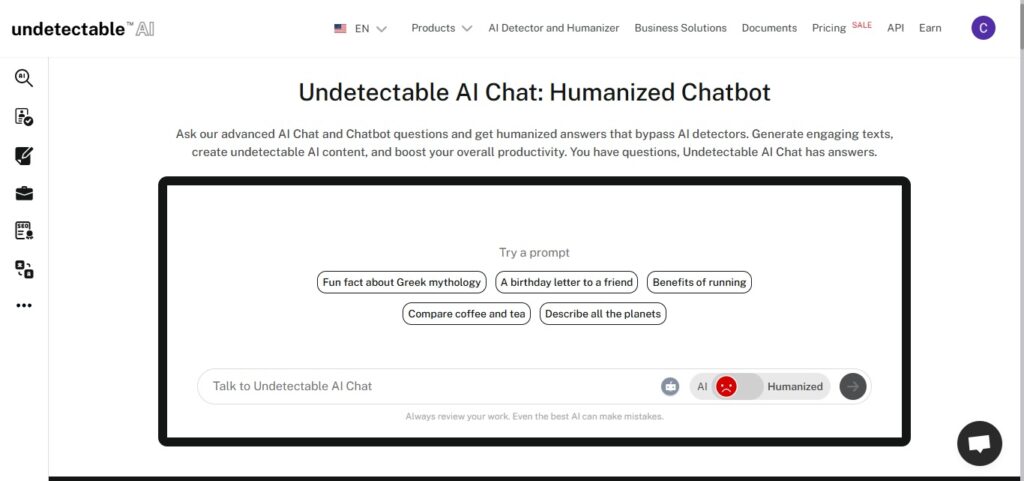
Neural Networks and Deep Learning
Deep learning is a subset of machine learning designed to model and imitate the human brain. It uses neural networks to process complex patterns.
Let’s see what both concepts are all about:
What Are Neural Networks?
Neural networks are a series of algorithms that help to recognize relationships in a dataset through a process that mimics the way the human brain operates.
Similar to the way the human brain is composed of neurons, neural networks consist of nodes that communicate with one another.
These nodes are also able to reinforce their connections depending on the new data. The more connections, the easier a network learns to identify intricate patterns and produce results.
This renders neural networks applicable in image recognition, human speech recognition, and language translation.
Layers, Nodes, and Activation Functions
A neural network has various layers. They include:
- The input layer where information enters
- The hidden layer, where information gets processed throughout multiple stages
- The output layer, where information comes out as a final result.
In neural networks, each node performs a specific function. Some nodes detect images and objects, while some recognize images and text.
Nodes in neural networks are also neurons that transmit information to various parts of the neural network.
They receive inputs, apply an activation function to produce an output that is passed on to other nodes.
Activation functions in neural networks are like gatekeepers that determine if the information is good enough to pass through the next stage.
They perform quality control to determine if a neuron should be activated. It is like a filter for neurons. They also change the neuron value based on the data they receive.
Without activation functions, neural networks cannot make good predictions. This is because the neurons just pass data to each other without distinguishing what is important and what is not.
How Deep Learning Powers Image and Speech Recognition
As a subset of machine learning, deep learning allows AI to understand complex patterns, especially in images and speech.
For image recognition, deep learning allows algorithms to detect faces despite cosmetic changes.
The first layers in neural networks might detect simple things like lines and curves. Middle layers combine these into shapes and textures.
Final layers put it all together to recognize objects, faces, or scenes.
Speech recognition also works like image recognition. With speech recognition, deep learning uses millions of audio clips to recognize speech.
It then uses algorithms to understand what you have said and differentiate tones and voices.
The first layers process sound waves, the middle layers identify phonemes and syllables, and the final layers find words and meaning.
That’s why you can easily search for things just by saying “Hey Google” or “Hey Siri.”
Natural Language Processing (NLP)
NLP is how AI understands and generates human language. It teaches computers how to understand and produce results in human-like responses.
NLP is the coming together of computer science, linguistics, machine learning, and deep learning. It helps AI understand unstructured text or voice data and pull information out of it.
For example, when you ask Siri a question or chat with a customer support bot, the NLP makes these bots understand what you are saying.
With NLP, GPT models can deal with context, sarcasm, and multiple meanings of words.
Among the most popular examples of technologies that rely on NLP are voice-activated virtual assistants, programs that write emails to recognize spam, and translation apps.
The Undetectable AI’s AI Detector and image detector are also tools that use natural language processing.
Our AI Detector offers a comprehensive analysis of text to detect AI writing.
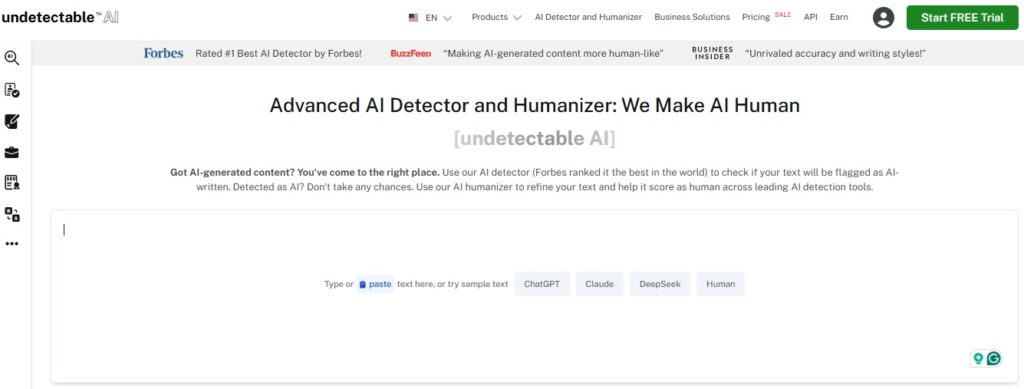
You can also use our AI Image Detector to verify if an image is AI-generated or genuinely human-made.
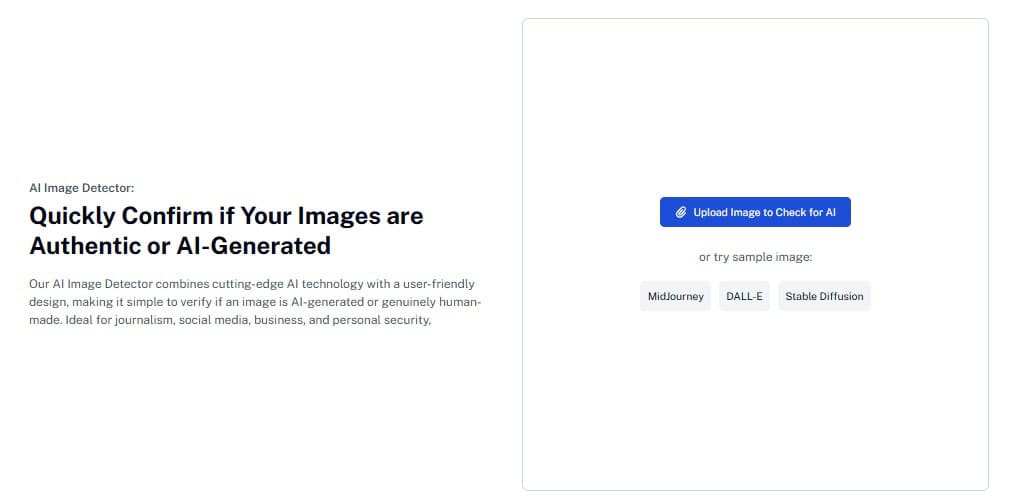
How AI Makes Decisions
The way AI makes decisions is different from how humans make decisions. Humans involve emotions and intuition, while AI is based on patterns in data.
For instance, when you think of what to wear, you consider the weather, your plans, and probably other factors subconsciously. AI does something similar but more systematically.
It assigns numerical weights to different factors and calculates probabilities. AI considers patterns and data. For example, for tasks as simple as suggesting a playlist, AI considers your listening habits to determine your taste in music.
How does artificial intelligence work in healthcare?
Well, the answer is simple. It can give you a list of possible illnesses based on symptoms provided faster than doctors. It can also recommend treatments. More recently, AI has been used during surgery.
Real-World Applications of AI
AI is everywhere. You just have to find a way to use it for your benefit. Here are some real-world applications of artificial intelligence:
- Generative AI tools such as ChatGPT, Claude, and Gemini.
- Smart assistants like Alexa and Siri
- Self-driving cars
- Wearable sensors and devices for monitoring health conditions
- Product recommendation and shopping assistants in retail.
- AI detects fraudulent transactions by recognizing unusual transactions
AI can also be applied to content creation. Undetectable AI has various tools to this effect. We have tools such as:
- AI Humanizer that helps generate human-like content

- AI SEO Writer that generates highly optimized articles capable of bypassing AI detection.

- AI Essay Writer that writes plagiarism-free and well-researched essays.
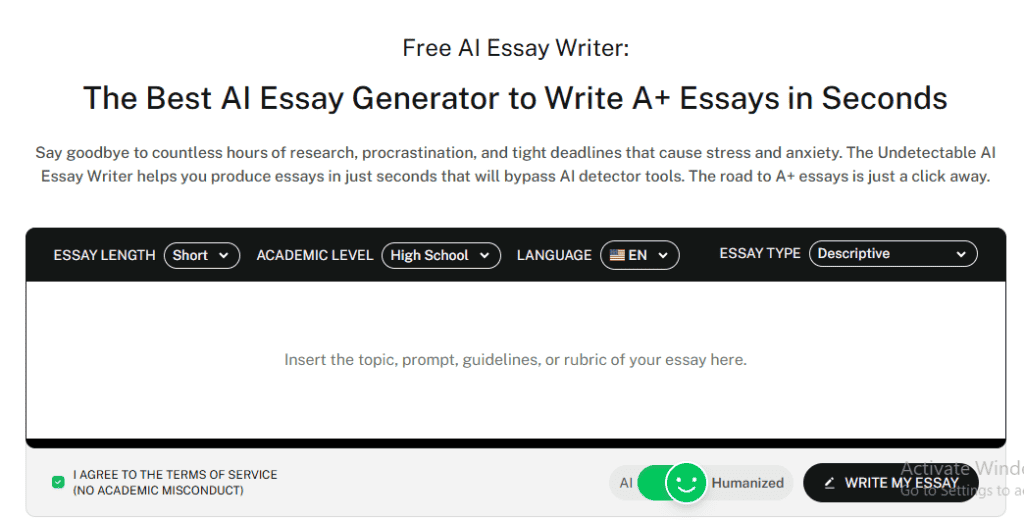
These AI tools are guaranteed to make your content writing task easier and faster.
Data Training and Model Building
Building AI models and tools requires certain steps, and they include:
Data Collection and Labeling
This is the stage where relevant data is gathered. This data represents the real-world scenarios the AI will encounter.
After collection comes labelling. This part is usually tedious because it requires combing through large datasets to find quality data AI can learn from.
Training vs Testing Sets
After collection and labelling, the data is divided into two sets. The training set and the testing set.
The training set is what AI learns from, and the testing set is what we use to evaluate how well it has learned.
The testing set also helps developers understand how artificial intelligence will perform on new and unseen data.
Overfitting, Underfitting, and Model Accuracy
Overfitting is when AI becomes too used to its training data and begins to perform poorly on new information.
Underfitting is the opposite. Here, artificial intelligence doesn’t learn enough from the training data and performs poorly even on basic tasks.
Model accuracy is the balance between overfitting and underfitting.
At this stage, AI is able to work with both new and old data while still being accurate.
Enhance your content’s authenticity—try the AI Detector and Humanizer now.
Final Thoughts
When someone asks you, “Artificial intelligence—how does it work?” you can now explain that it’s a pattern recognition-powered system driven by data and algorithms.
AI isn’t magic. It’s a combination of math, statistics, and computer science working together to solve complex problems.
It also has its limitations, especially in situations that require common sense, creativity, or emotional intelligence. So while it can mimic human thinking, it’s not human.
Artificial intelligence is evolving every day, and it’s better to be an informed participant rather than just a confused bystander.
To stay ahead, take advantage of tools like Undetectable AI’s AI Humanizer, AI SEO Writer, and AI Essay Writer—designed to help you create smarter, more natural content.
Try Undetectable AI today and unlock the full power of responsible, human-sounding AI.
